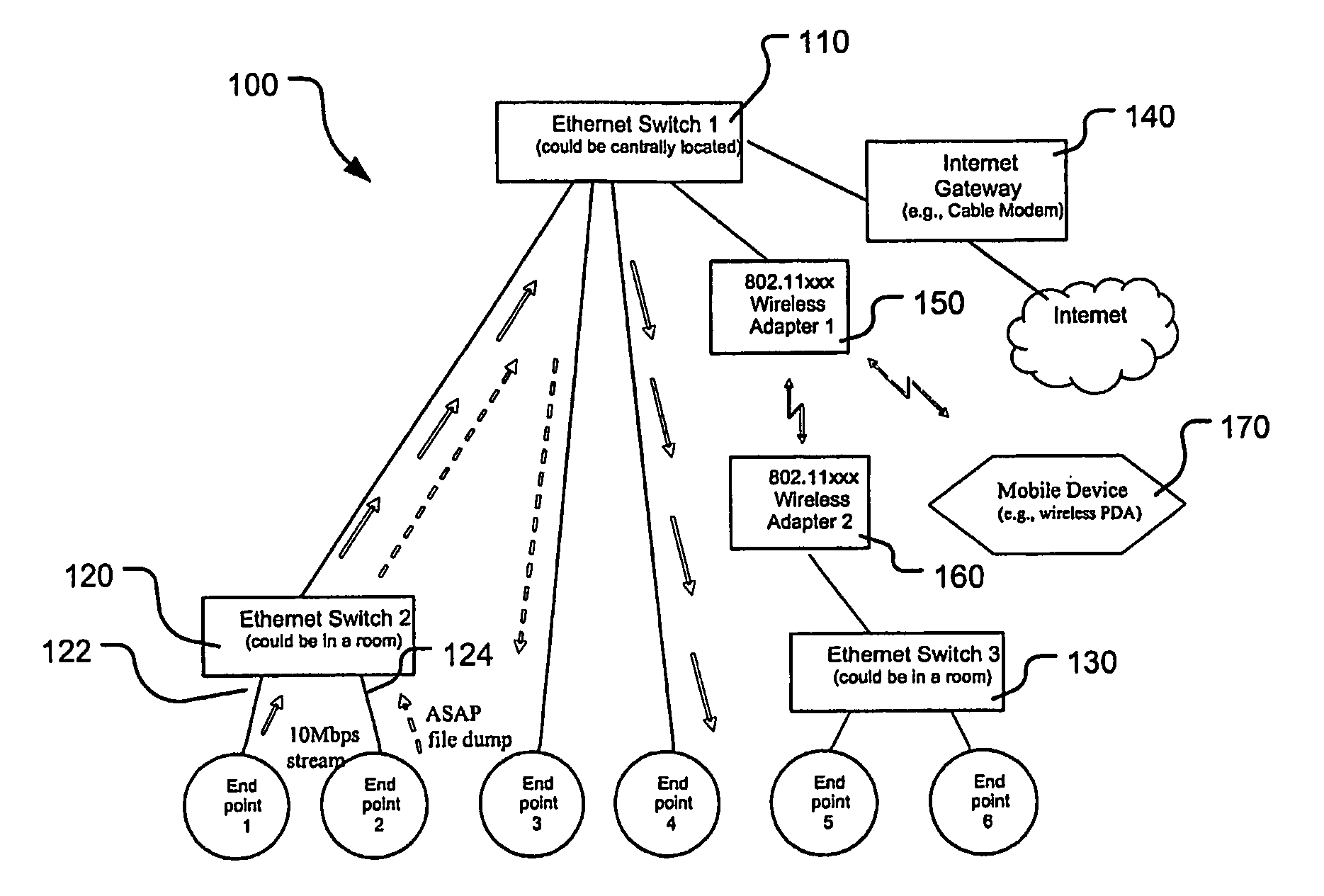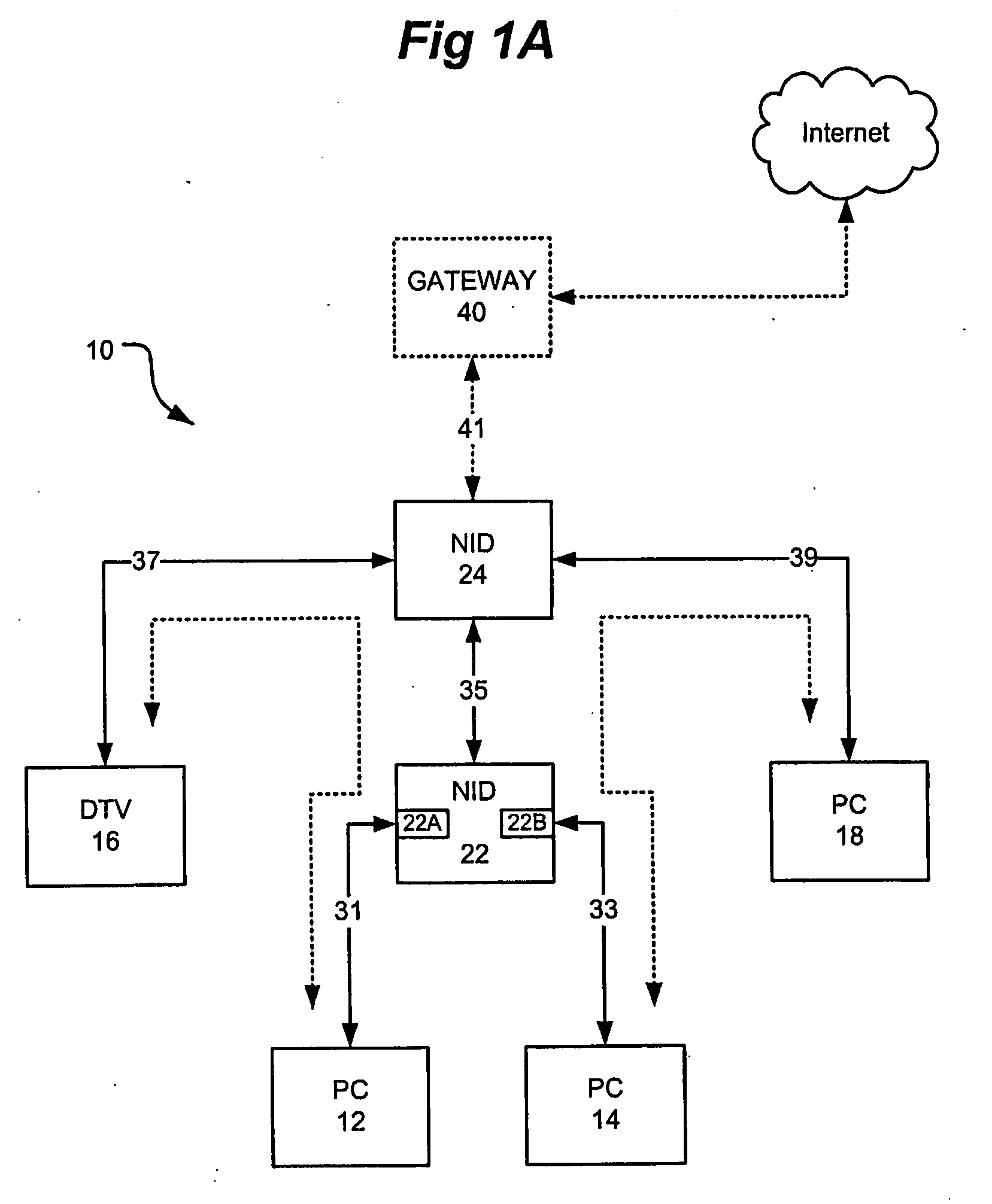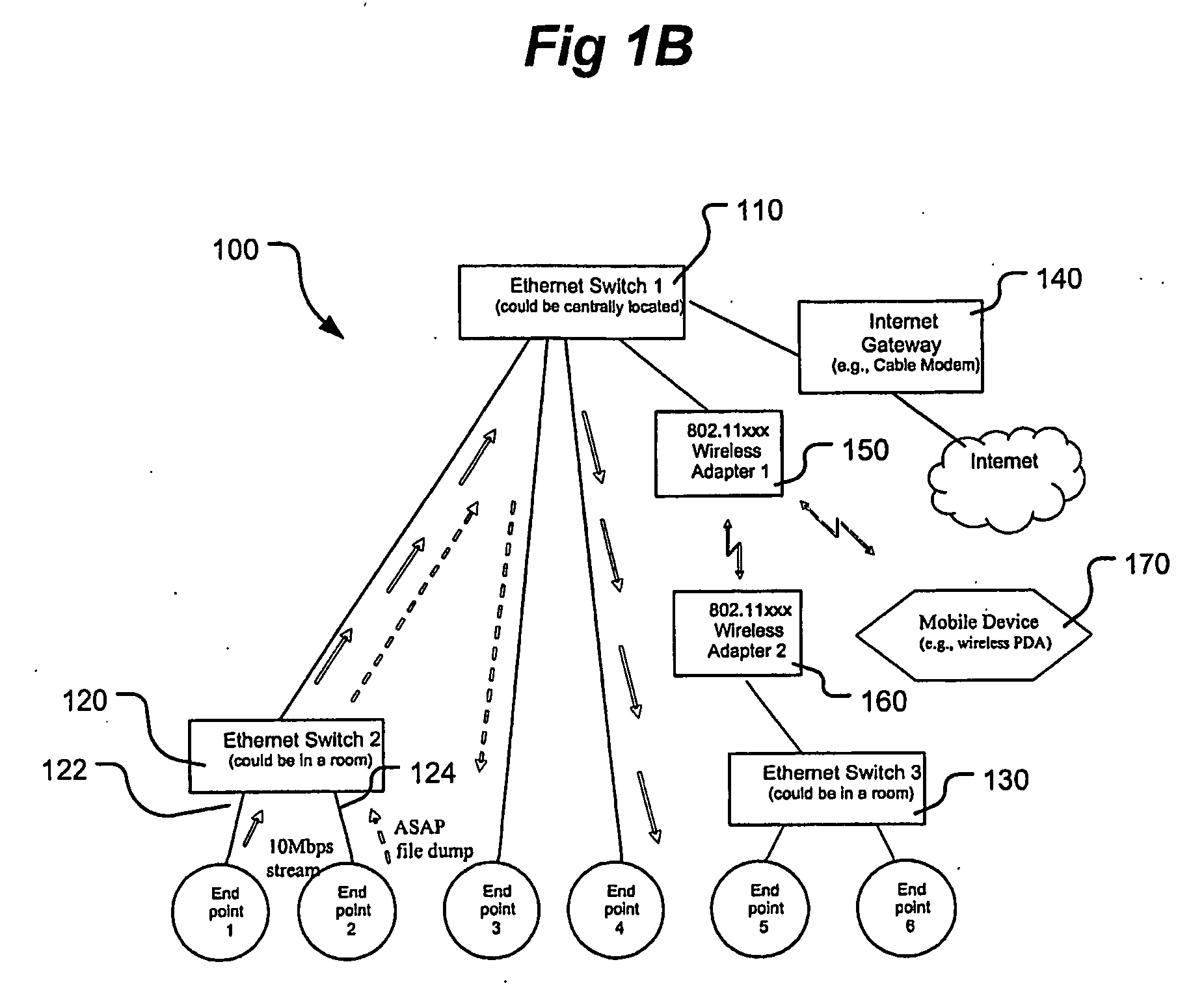System and Method for Enhancing Network Quality of Service
a network quality and network technology, applied in the field of data transmission networks, can solve the problems of large buffers, inability to smooth playback, and inability to reduce and achieve the effect of reducing the risk of other data traversing the data transmission network
- Summary
- Abstract
- Description
- Claims
- Application Information
AI Technical Summary
Benefits of technology
Problems solved by technology
Method used
Image
Examples
Embodiment Construction
[0022] It is to be understood that the figures and descriptions of the present invention have been simplified to illustrate elements that are relevant for a clear understanding of the present invention, while eliminating, for purposes of clarity, many other elements found in typical network systems and methods of making and using the same. Those of ordinary skill in the art will recognize that other elements are desirable and / or required in order to implement the present invention. However, because such elements are well known in the art, and because they do not facilitate a better understanding of the present invention, a detailed discussion of such elements is not provided herein.
[0023] According to an aspect of the present invention, a user configurable functionality may be added to network infrastructure devices (NIDs), such as Ethernet switches, routers and hubs, wireless adapters, access points (APs), and bridges, to improve quality of service (QoS) for applications such as d...
PUM
 Login to View More
Login to View More Abstract
Description
Claims
Application Information
 Login to View More
Login to View More - R&D
- Intellectual Property
- Life Sciences
- Materials
- Tech Scout
- Unparalleled Data Quality
- Higher Quality Content
- 60% Fewer Hallucinations
Browse by: Latest US Patents, China's latest patents, Technical Efficacy Thesaurus, Application Domain, Technology Topic, Popular Technical Reports.
© 2025 PatSnap. All rights reserved.Legal|Privacy policy|Modern Slavery Act Transparency Statement|Sitemap|About US| Contact US: help@patsnap.com



